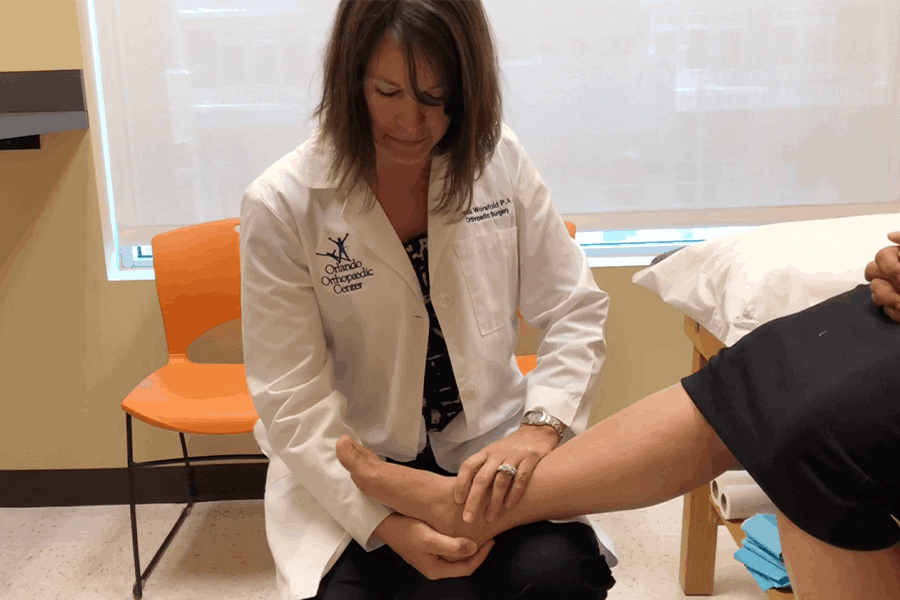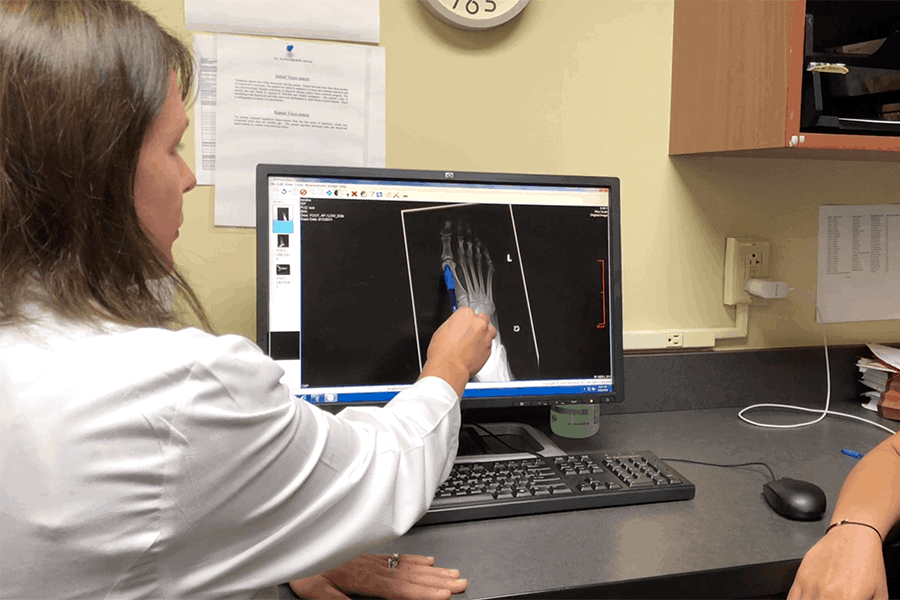What is a Total Ankle Replacement?
- What is total ankle replacement surgery?
- Why is total ankle replacement an alternative to ankle arthrodesis?
- Why would I need total ankle replacement surgery?
- Am I a candidate for total ankle replacement surgery?
Geraldine broke her ankle in three different places 20 years ago. She says, “My only option then would have been a fusion, which would have given me no mobility.”
Today, a patient like Geraldine can undergo a total right ankle replacement and resume their normal activities without crippling arthritis pain. She says, “The biggest benefit of the procedure was that I can walk now. Before, I couldn’t without the use of a cane and extreme pain.”
Geraldine underwent the surgery in September 2020 with Sophia P. Davis, D.O., an orthopaedic surgeon specializing in foot and ankle surgery at Orlando Orthopaedic Center.
“I was very happy to have the option that Dr. Davis gave me. Now that I’m fully recovered, I feel great,” she says.
You’ve probably heard about hip and knee replacement, but what is an ankle replacement and how can it help you return to your normal activities?
What is Total Ankle Replacement Surgery?

In total ankle replacement surgery, a patient like Geraldine can have the damaged ankle joint removed by an orthopaedic surgeon and then replaced with an artificial joint. This procedure is also called ankle arthroplasty.
The ankle joint has a big job to do, connecting the foot to the leg and handling major weight bearing loads. This joint movement allows the foot to flex up and down. The ankle joint is made up of a cartilage surface at the end of the shin bone (tibia) that joins with the cartilage covered surface of the ankle bone (talus). Total ankle replacement surgery cleans up the cartilage on these two surfaces and attaches a metal polyethylene joint surface to the remaining parts of the bone.
Total ankle replacement surgery is an alternative surgical approach to ankle arthrodesis, which is the ankle fusion procedure Geraldine referred to. This year, more than 4,000 patients in the U.S. will undergo total ankle replacement surgery.
Geraldine is one example of the typical baby boomer patients who can benefit from total ankle replacement surgery.
She says, “I definitely think this procedure changed my life.”
Why is Total Ankle Replacement An Alternative to Ankle Arthrodesis?
Ankle arthrodesis, or ankle fusion can relieve pain, just like the total ankle joint replacement procedure. Total ankle replacement also relieves pain but the patients retain mobility in the joint.
Ankle fusion removes the cartilage damaged by arthritis and then surgically aligns the ankle at 90 degrees. The orthopaedist uses a plate, or screws to fuse the joint in place. Over time, the bones mend themselves together.
Fusing the ankle bone in place does cause patients to lose ankle mobility. This leads to changes in how these patients walk. Over time, this adds wear and tear in other parts of the body. One study showed 10 years after the ankle arthrodesis procedure, 30% of patients experienced major complications, 51% had continued pain, and 66% experienced degenerative joint disease.
In total ankle replacement the surgeon resurfaces the weight-bearing sections of the ankle joint where all the bones come together, replacing worn-out parts with a new artificial joint. This procedure is often recommended when, like in Geraldine’s case, there is severe ankle arthritis that has eroded the joint surface of the ankle. Pain develops, becomes constant, and worsens into a debilitating condition negatively affecting the life of the patient.
Conversely, total ankle replacement does not disrupt the gait pattern of the affected person. The goal of this type of joint replacement surgery is to provide reasonable mobility, lessen pain, restore physical alignment, and replace the movement of the ankle joint. One study showed 83% of patients reported functional improvement and 73% reported occasional pain or no pain at all. The average range of motion was 18 degrees.
Why Would I Need Total Ankle Replacement Surgery?

Arthritis pain is the number one reason patients seek out total ankle replacement surgery. Inflammation, stiffness, and even difficulty walking are all reasons to seek out this surgery.
The primary types of ankle arthritis include:
- Post-traumatic arthritis that occurs after an injury
- Rheumatoid arthritis, which is a kind of autoimmune disease affecting joints
- Osteoarthritis is a wear and tear inflammation that often develops in older people
Typically, several therapies are recommended before surgery is prescribed for patients, particularly if they have mild or moderate arthritis. Anti-inflammatory medication, ankle braces, physical therapy, or even corticosteroid injections may help with the pain for a while. Severe arthritis, pain, difficulty walking, or continuing normal life activities are all good reasons to seek out surgery to replace the ankle joint.
Am I a Candidate for Ankle Replacement?
The typical candidate for total ankle replacement surgery has worked closely with their doctor to alleviate pain through a variety of conservative measures. The surgery candidate is typically over 60 years old and suffering from severe ankle arthritis. These candidates are typically in good health, and have healthy tendons and ligaments.
A patient with one or more chronic illnesses, like poorly controlled diabetes, or who is obese and a smoker is typically not considered for this surgery.
Geraldine says, “Everything was extremely professional and Dr. Davis was very pleasant, so I truly had confidence in her.”


